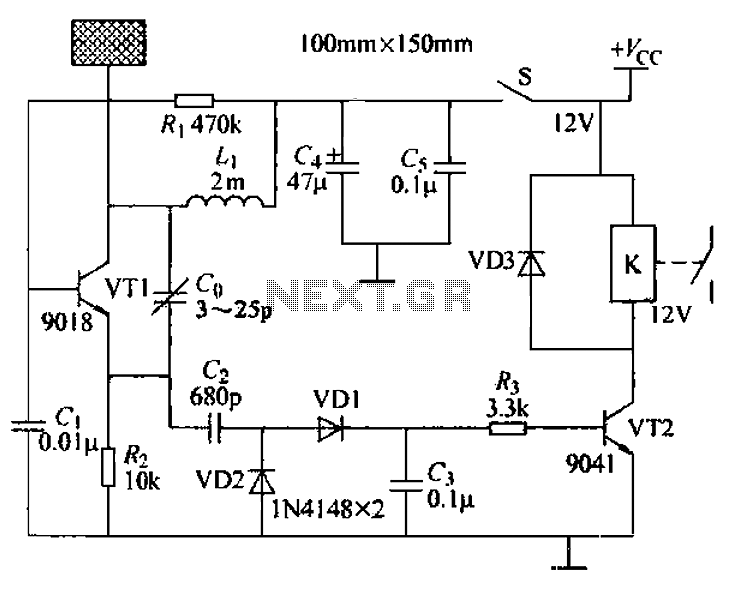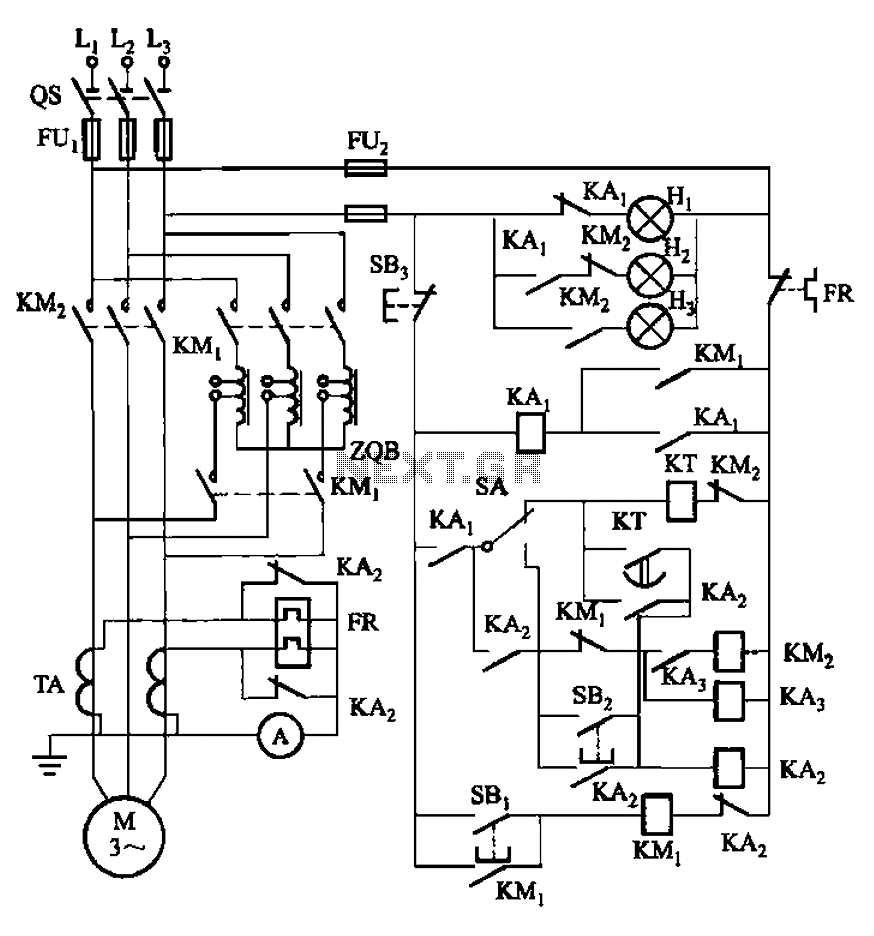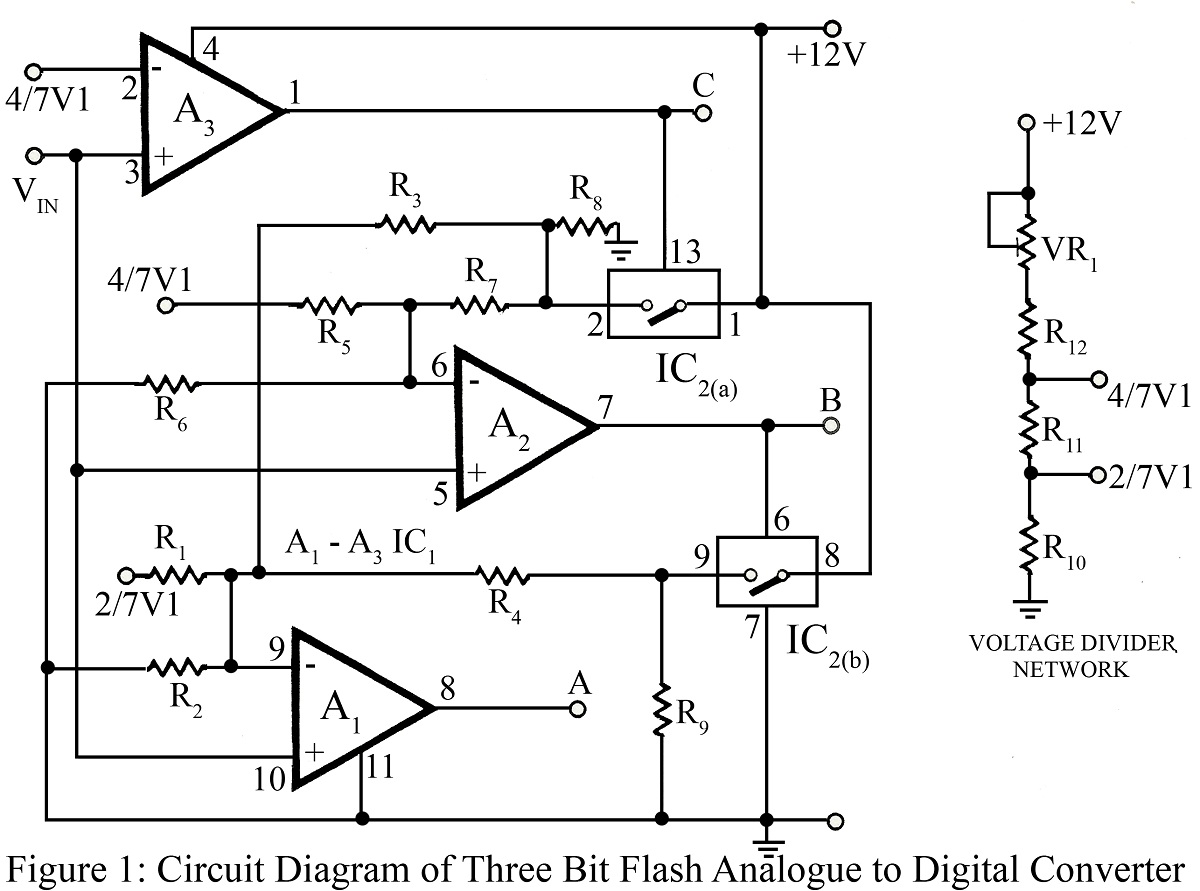
Christmas light circuit

The chart illustrates a Christmas lights circuit that employs a simple and cost-effective CD4069 CMOS hex inverter to control four separate circuits, each consisting of 50 light-emitting diodes (LEDs), totaling 200 LEDs. The circuit is powered directly by a 220V power source without the use of a power transformer. The power is rectified using a bridge rectifier formed by diodes VD1 to VD4, with differential pressure managed by resistors R1 and R5, and filtered by capacitor C1.
The Christmas lights circuit leverages the CD4069 CMOS hex inverter, which is a versatile component known for its ability to perform logical inversion while consuming minimal power. In this application, it serves as a control unit for the LED circuits, allowing for the modulation of light patterns and effects.
The four circuits, each comprising 50 LEDs, are connected in parallel to ensure uniform brightness and distribution of voltage across the LEDs. The LEDs are selected for their efficiency and longevity, making them ideal for decorative applications such as Christmas lighting.
The direct connection to a 220V AC power source eliminates the need for a transformer, simplifying the design and reducing costs. However, this necessitates the use of a bridge rectifier, which converts the AC voltage to a pulsating DC voltage suitable for powering the LEDs. The bridge rectifier consists of four diodes (VD1 to VD4) arranged in a configuration that allows for the conversion of both halves of the AC waveform into a usable DC output.
To stabilize the voltage and reduce ripple in the rectified output, resistors R1 and R5 are employed to manage differential pressure within the circuit. These resistors help to limit the current flowing through the LEDs, preventing damage from excessive current while also ensuring that the LEDs operate within their specified voltage range.
Capacitor C1 plays a critical role in filtering the rectified output. It smooths the pulsating DC voltage by charging and discharging, thereby reducing voltage fluctuations and providing a more stable power supply to the LED circuits. This filtering is essential for maintaining consistent brightness and preventing flickering in the LED lights.
Overall, this Christmas lights circuit design exemplifies a practical approach to creating an efficient and visually appealing lighting solution, utilizing readily available components and straightforward circuitry to achieve the desired effects.The chart shows the Christmas lights circuit which uses simple, inexpensive CD4069 CMOS hex inverter to control four circuits with 200 light-emitting diodes (each circuit has 50 LEDs), and it is directly supplied by the 220V power source without power transformer. The power is bridge rectified by VD1 ~ VD4, differential pressured by R1, R5 and filtered by C1.. 🔗 External reference
The Christmas lights circuit leverages the CD4069 CMOS hex inverter, which is a versatile component known for its ability to perform logical inversion while consuming minimal power. In this application, it serves as a control unit for the LED circuits, allowing for the modulation of light patterns and effects.
The four circuits, each comprising 50 LEDs, are connected in parallel to ensure uniform brightness and distribution of voltage across the LEDs. The LEDs are selected for their efficiency and longevity, making them ideal for decorative applications such as Christmas lighting.
The direct connection to a 220V AC power source eliminates the need for a transformer, simplifying the design and reducing costs. However, this necessitates the use of a bridge rectifier, which converts the AC voltage to a pulsating DC voltage suitable for powering the LEDs. The bridge rectifier consists of four diodes (VD1 to VD4) arranged in a configuration that allows for the conversion of both halves of the AC waveform into a usable DC output.
To stabilize the voltage and reduce ripple in the rectified output, resistors R1 and R5 are employed to manage differential pressure within the circuit. These resistors help to limit the current flowing through the LEDs, preventing damage from excessive current while also ensuring that the LEDs operate within their specified voltage range.
Capacitor C1 plays a critical role in filtering the rectified output. It smooths the pulsating DC voltage by charging and discharging, thereby reducing voltage fluctuations and providing a more stable power supply to the LED circuits. This filtering is essential for maintaining consistent brightness and preventing flickering in the LED lights.
Overall, this Christmas lights circuit design exemplifies a practical approach to creating an efficient and visually appealing lighting solution, utilizing readily available components and straightforward circuitry to achieve the desired effects.The chart shows the Christmas lights circuit which uses simple, inexpensive CD4069 CMOS hex inverter to control four circuits with 200 light-emitting diodes (each circuit has 50 LEDs), and it is directly supplied by the 220V power source without power transformer. The power is bridge rectified by VD1 ~ VD4, differential pressured by R1, R5 and filtered by C1.. 🔗 External reference





